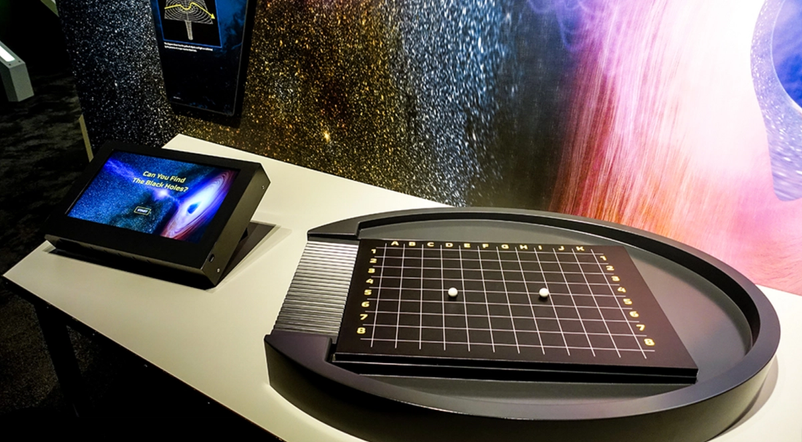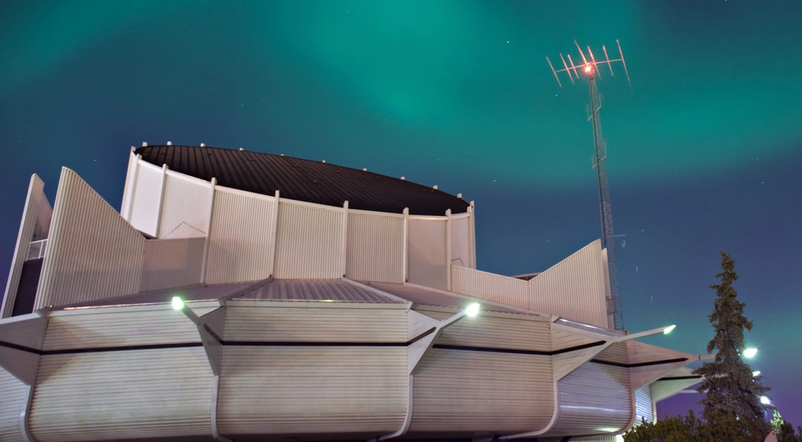Telus World of Science Edmonton
Black Hole Finder Exhibit
Telus World of Science Edmonton (TWoSE) showcased a fun new exhibit on our universe's laws with the S.P.A.C.E. gallery, which features our exciting new project – the Black Hole Finder.
Imagine a table-sized game board with magnetic balls that will roll towards the centre making curved paths to simulate the gravitational pull of a black hole. Can you guess where the black hole is by looking at the orbits of the celestial objects around it? That's exactly how the astronomers do it, and now TWoSE visitors will be able to take a closer look at how these discoveries work, by finding black holes themselves.
Intergalactic is proud to be part of the development of this creative piece. Working alongside our partner 3DS, who specializes in building amazing communicative environments and installs, we have created a one-of-a-kind experience for kids and adults alike.
Our team of space cowboys built the software piece that goes alongside the game board where the black holes will be. Using Node JS and React, we created an application to be used on a touchscreen Lenovo Ideacentre 520 monitor, where visitors to the Telus World of Science will be able to take their guess on finding the black holes.
From a row of slightly-angled chutes, visitors release a small, hollow, stainless steel sphere that rolls across a table in which magnets are hidden beneath to distort the sphere’s path. The visitor task is to figure out where the hidden magnets (representing black holes) are located. There are a dozen side-by-side chutes in parallel, each sending a sphere across the tabletop along a different straight path until distorted (or not) by a hidden magnet. The basic activity, discovering where a black hole is located, is one of deduction by inference. This starts with the user releasing a ball from a random location (selecting to roll it down any of the chutes), then narrowing down their choices as they note where any deflection can be observed. Once a user thinks they have identified where a black hole is located, they can test their hypothesis. A small monitor mounted to the table displays a grid in the shape of the tabletop. Users touch the spot on the grid to register their guess as to where the black hole is located, then are shown an image that overlays the actual location of the black hole magnet on the grid along with their guess.
There are multiple magnets beneath the tabletop. Following each correct identification of where a magnet is located, a different magnet is activated so that the challenge to explore for “black holes” continues.
The exhibit features an admin portal where the staff are able to enter a corresponding location in the software as to how it would map to the physical board. Visitors were able to use our UI to check their guesses on the black hole grid to see if they guessed the location correctly based on the pull of the magnets. Right or wrong, you get to learn more about the science of black holes and get to see cool videos of space. Get ready for a journey of discovery! Through the new exhibits, you can learn about the very beginnings of the solar system, stars, planets and so much more.

Project: Black Hole Finder Interactive Game Exhibit
Client: Telus World of Science Edmonton
Role: Development
Links/Credits:
Co-designed by Three Dimensional Services, Design and fabrication;
and by TWOSE Director of Exhibits, Milan Krepelka, and Jeff Kennedy & Assoc.
Completion: August 2018



